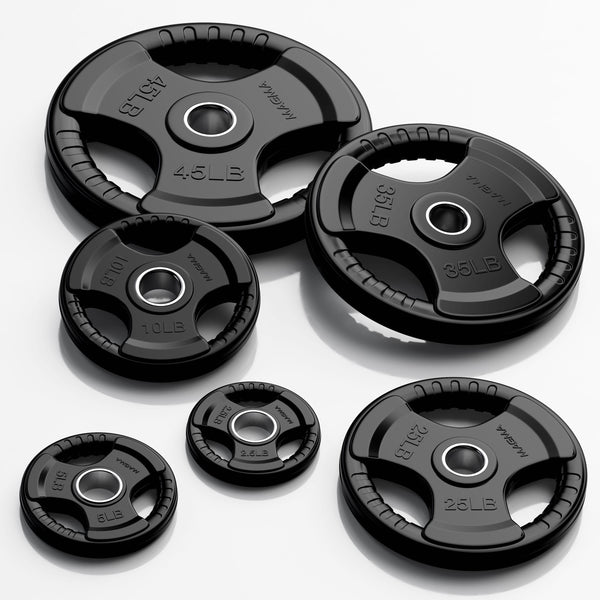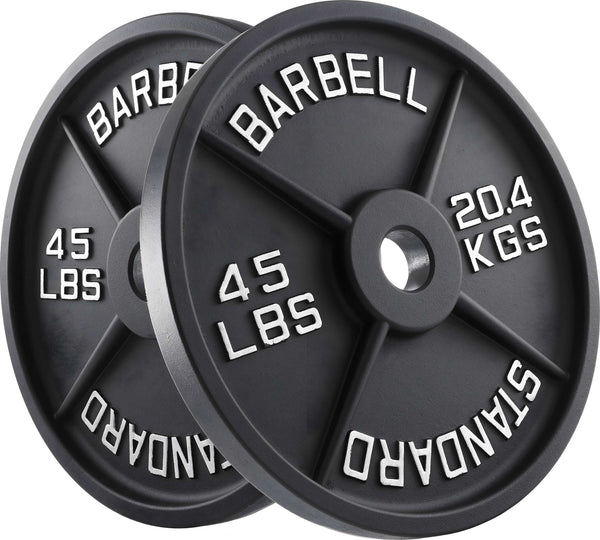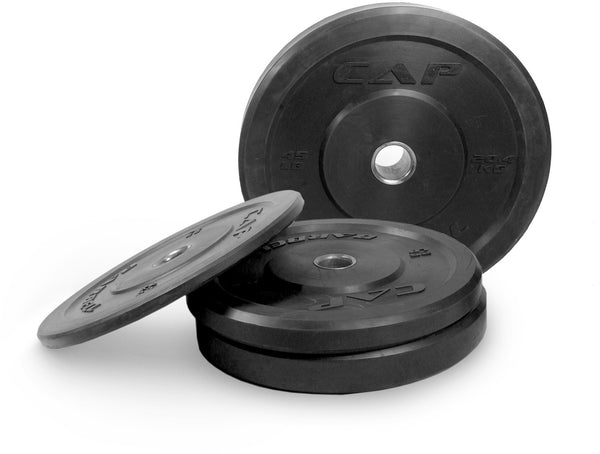Your Cart is Empty
January 17, 2024 3 min read
Olympic lifting is a type of weightlifting that requires precise technique and specific equipment. One essential piece of equipment for Olympic lifting is weight plates. In this article, we will discuss the best weight plates for Olympic lifting and the features to consider when choosing them. Whether you are a beginner or an experienced lifter, the right weight plates can make a significant difference in your lifting performance and safety.
Shop The Collection: Weight PlatesThere are several factors to consider when choosing weight plates for Olympic lifting. The first and most important factor is the weight accuracy. The weight of the plates should be precise within a few grams to ensure that you are lifting the intended weight. This is especially important for competitions where even a slight difference in weight can affect your performance and ranking.
The second factor to consider is the durability of the plates. Olympic lifting involves high-intensity movements, and the weight plates need to be able to withstand the impact and stress. Choose plates made of high-quality materials such as cast iron or steel, which are known for their durability and longevity.
The third factor is the diameter of the hole in the center of the plates. The hole should be the correct size for your barbell, as using plates with a larger or smaller hole can affect your grip and technique. Most Olympic barbells have a diameter of 2 inches, so look for plates with a 2-inch hole.
The fourth factor is the design of the plates. Some plates have a smoother surface, while others have a textured or grip-enhancing surface. Smooth plates are easier to slide on and off the barbell, but they may not be as secure as textured plates. Textured plates provide a better grip, but they may be harder to slide on and off the barbell. Choose the design that best suits your preferences and needs.
There are several types of weight plates available on the market, each with its own pros and cons. Here are the most common types of weight plates and their characteristics:
Rubber coated plates are a popular choice among gym-goers and home fitness enthusiasts because they are relatively inexpensive and easy to handle. The rubber coating provides a secure grip and protects the plates from damage. However, rubber coated plates are not as durable as other types of plates and may start to show wear and tear over time. They are also prone to bouncing, which can be dangerous during Olympic lifting.
 Shop The Gear: MAGMA Virgin Rubber 2-inch Olympic Grip Plates, from $2.99 USD
Shop The Gear: MAGMA Virgin Rubber 2-inch Olympic Grip Plates, from $2.99 USD
Cast iron plates are a classic choice for Olympic lifting. They are made of solid cast iron and are known for their durability and longevity. Cast iron plates are also accurate in weight and have a smooth surface for easy sliding. However, they are heavier and bulkier than other types of plates, which can make them difficult to handle and store. They are also prone to rusting if not properly maintained.
 Shop The Gear: MAGMA Olympic Cast Iron Weight Plates, from $2.99 USD
Shop The Gear: MAGMA Olympic Cast Iron Weight Plates, from $2.99 USD
Steel plates are a more expensive option, but they offer several advantages over other types of plates. They are more accurate in weight, have a smooth surface, and are very durable. Steel plates are also less prone to rusting than cast iron plates. The main disadvantage of steel plates is that they are heavier and bulkier than other types of plates, making them difficult to handle and store. They are also more expensive than other types of plates, which may not be suitable for everyone's budget.
Bumper plates are made of rubber or urethane and are designed specifically for Olympic lifting. They are known for their durability and low bounce, which makes them safe to use for high-intensity movements such as the snatch and the clean and jerk. Bumper plates are also accurate in weight and have a uniform diameter for a consistent feel on the barbell. The main disadvantage of bumper plates is that they are more expensive than other types of plates and may not be suitable for everyone's budget.
 Shop The Gear: CAP Barbell Olympic Bumper Weight Plates, from $13.99 USD
Shop The Gear: CAP Barbell Olympic Bumper Weight Plates, from $13.99 USD
In conclusion, the best weight plates for Olympic lifting depend on your personal preferences and needs. Consider factors such as weight accuracy, durability, diameter, and design when choosing your weight plates. Remember to always prioritize safety when lifting, and choose weight plates that are suitable for your level of experience and ability. With the right weight plates, you can take your Olympic lifting performance to the next level and achieve your fitness goals.
Shipping Protection gives you peace of mind while saving you time and money.
Shipping Protection provides coverage for eligible orders that are lost or damaged in transit, or stolen after delivery has been confirmed by the carrier. MAGMA Fitness, through its partners, administers the protection program and may receive compensation for these services. Coverage is subject to the terms, conditions, and exclusions outlined in our Shipping Protection Terms & Conditions.